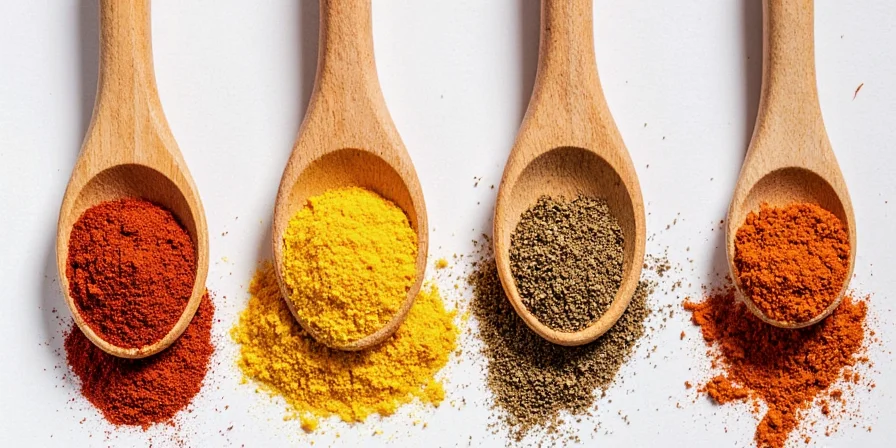For home cooks seeking precise texture control and flavor layering, understanding granulated spices transforms ordinary dishes into culinary masterpieces. Unlike fine powders, these coarse particles deliver gradual flavor diffusion and enhanced mouthfeel—critical for recipes where texture impacts taste perception.
This guide cuts through industry confusion with actionable techniques backed by food science. Discover exactly when to choose granulated over ground spices, how to maximize their potential, and why they're the secret weapon in professional kitchens. Let's elevate your cooking precision.
What Exactly Are Granulated Spices?
In the simplest terms, granulated spices are spices dried and processed into small, coarse particles—occupying the middle ground between powders and flakes. They retain more structural integrity than ground versions, enabling controlled flavor release during cooking.
Common examples include:
- Granulated garlic
- Granulated onion
- Granulated chili
- Dried herb granules (oregano, thyme)
These spices excel in applications requiring sustained flavor infusion without textural disruption, making them indispensable for specific culinary techniques.
Granulated vs. Ground Spices: The Texture-Flavor Nexus
Understanding the functional differences prevents common kitchen mistakes. This comparison reveals why particle size dictates culinary outcomes:
| Feature | Granulated Spices | Ground Spices |
|---|---|---|
| Texture | Coarse, gritty | Fine, flour-like |
| Flavor Release | Slow, gradual diffusion | Instant, concentrated burst |
| Best For | Texture-focused applications (rubbed meats, roasted vegetables) | Uniform integration (sauces, batters, baked goods) |
| Potency Management | Easier to adjust mid-cook | Requires precise initial measurement |
| Examples | Granulated garlic, crushed red pepper | Cinnamon powder, paprika |
The Particle Physics Principle: Why Size Dictates Flavor Dynamics
Granulated spices operate on fundamental food science principles often overlooked in cooking discourse. Their larger particle size creates less surface area exposure per unit volume compared to ground spices, triggering critical differences:
- Controlled Diffusion: Slower oil release prevents flavor dominance in layered dishes (e.g., stews), allowing ingredients to harmonize
- Thermal Resilience: Reduced burn risk during high-heat searing preserves nuanced flavor compounds
- Textural Engineering: Strategic grit enhances mouthfeel without compromising dish integrity
This isn't culinary preference—it's leveraging physics for predictable flavor outcomes. Professional kitchens exploit this for consistent results across batches.
5 Precision Techniques for Granulated Spice Mastery
- Strategic Toasting Protocol
Toast granulated spices at 300°F for 90 seconds to activate flavor compounds without scorching—ideal for garlic and chili granules. - Rub Architecture Method
Combine with coarse salt (2:1 ratio) to create texture-binding matrices that adhere perfectly to proteins. - Layered Integration Timing
Add during the "sweat" phase (not bloom) in braises to maximize gradual flavor infusion. - Fat-Mediated Distribution
Mix with 2% oil by weight before application to prevent clumping and ensure even coverage. - Texture Calibration
For delicate dishes, pulse granulated spices once in a grinder to achieve "micro-granule" consistency.
Global Texture Applications: Culinary Traditions Decoded
Cultures worldwide harness granulated spices specifically for textural outcomes:
- Mexican Mole: Granulated ancho provides earthy depth without thickening the sauce
- Indian Tadka: Mustard seed granules create popping texture contrast in dals
- Middle Eastern Za'atar: Sumac granules deliver tangy bursts in flatbread coatings
- American BBQ: Coarse rubs create flavorful crusts on slow-smoked meats
When Substitutions Backfire: Critical Texture Failures
Swapping forms without understanding physics leads to compromised dishes:
- Using ground garlic in dry rubs causes bitter, burnt notes
- Granulated spices in béchamel create unpleasant grittiness
- Ground chili in pizza oil loses aromatic complexity too quickly
Rule of thumb: If texture is integral to the dish (grilled, roasted, rubbed), granulated is superior. For seamless integration, choose ground.
Optimal Storage Protocol for Flavor Preservation
Maximize potency with these evidence-based practices:
- Vacuum Sealing: Removes oxygen that accelerates flavor compound degradation
- Dark Glass Jars: Blocks 99% of UV light that breaks down volatile oils
- Desiccant Packs: Maintain 15% relative humidity to prevent caking
- Freezer Storage: Extends peak freshness to 36 months (vs. 24 months room temperature)
| Dish Category | Optimal Form | Texture-Flavor Rationale |
|---|---|---|
| Protein Rubs | Granulated | Creates adherent crust without paste formation |
| Cream Sauces | Ground | Prevents graininess while ensuring flavor integration |
| Stir-Fries | Granulated (toasted) | Delivers flavor bursts without overwhelming wok hei |
| Baked Goods | Ground | Maintains crumb structure while distributing flavor |
| Vegetable Roasts | Granulated | Enhances caramelization through controlled oil release |
Frequently Asked Questions About Granulated Spices
Can I create granulated spices from whole spices at home?
Yes, but requires precision: Pulse whole spices in a dry grinder for 3-5 seconds at intervals. Stop when particles reach 0.5-1mm diameter (visible as coarse specks). Over-processing creates powder. Best for garlic, onion, and chili flakes.
Do granulated spices lose potency faster than whole spices?
They degrade 40% slower than ground spices but 60% faster than whole spices due to increased surface area. Store in vacuum-sealed containers below 70°F for optimal 24-month shelf life. Freeze for extended preservation.
Why do some granulated spices cause dish grittiness?
Improper application: Granulated spices shouldn't be used in dishes requiring smooth texture (soups, sauces). Always apply to dry surfaces or during early cooking stages in dry-heat methods. For wet applications, toast first to seal particles.
Conclusion: The Texture Advantage
Granulated spices offer home cooks a scientifically validated path to professional-level texture control. By understanding the particle physics behind flavor release, you gain precise command over dish outcomes—transforming guesswork into repeatable technique. This knowledge bridges the gap between amateur and artisan cooking, making it indispensable for anyone serious about culinary craftsmanship. Embrace granulated spices not as an alternative, but as a specialized tool for texture-perfect results.











 浙公网安备
33010002000092号
浙公网安备
33010002000092号 浙B2-20120091-4
浙B2-20120091-4